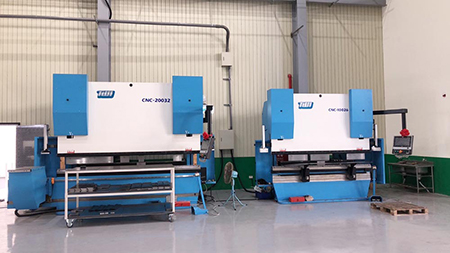Sheet Metal Fabrication

Wei Sheng Industrial Co., Ltd., located in the Yangmei Industrial Zone of Taoyuan, specializes in sheet metal fabrication and metal bending services, supporting customers across Taoyuan, Zhongli, Dayuan, Pingzhen, Guanyin, and nearby regions. Equipped with advanced metal-processing machinery— including high-efficiency laser cutting equipment, CNC hydraulic press brakes, welding systems, and post-processing capabilities—we can process a wide variety of materials such as stainless steel, aluminum, mild steel, and galvanized sheet metal. These capabilities allow us to manufacture customized metal components, machine enclosures, control boxes, metal housings, and structural parts with high precision.
For bending applications, we utilize two professional CNC press brakes: TW CNC-10026 (100 tons / 2600 mm) and CNC-20032 (200 tons / 3200 mm). These machines are capable of bending SS41 mild steel (4.5–6.5 mm) and SUS304 stainless steel (3.2–4.5 mm) with stable angle accuracy, ensuring consistent quality even on medium-to-large sheet-metal workpieces. Combined with our high-precision laser cutting equipment, we efficiently support rapid prototyping, small-to-medium batch production, and multi-stage metal fabrication projects.
Wei Sheng Industrial provides localized, fast-response sheet-metal services in the Taoyuan region, significantly reducing transportation time and communication costs. Our capabilities are ideal for automation equipment parts, mechanical structures, industrial machine enclosures, metal frames, and precision sheet-metal modules. By integrating laser cutting, bending, welding, CNC machining, and assembly, we deliver a truly one-stop metal fabrication solution, helping customers shorten development cycles and improve production stability.
For many years, our consistent quality, on-time delivery, and reliable fabrication capabilities have made us a trusted long-term partner for numerous industrial clients in Taoyuan—especially in the fields of sheet metal fabrication, metal bending, and laser cutting.
►Extended Service Capabilities
If you require more comprehensive metal processing services, please refer to the following pages: